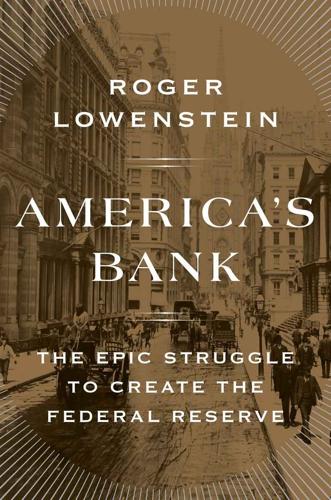
America's Bank: The Epic Struggle to Create the Federal Reserve
by
Roger Lowenstein
Published 19 Oct 2015
But in the interior of the country, fear of Wall Street domination would not go away. To midwestern progressives it was axiomatic that the Aldrich Plan was a tool of New York bankers. They saw it as a stalking horse for the “Money Trust”—a hazy expression understood by ordinary Americans to mean the Wall Street cabal that, it was said, manipulated the levers of the country’s finances. And in mid-1911 the Money Trust was catapulted onto the front pages—with disastrous consequences for the Aldrich Plan. The first inkling of trouble arose in June, when Vanderlip’s National City Bank divulged a plan for a new affiliated unit, to be known as National City Co.
…
The exterior, a rather “grim granite and slate,” his descendant was to write, seemed to have been designed to withstand a “siege.” With public passions so inflamed against Wall Street, Representative Charles Lindbergh’s resolution for an inquest into the Money Trust obtained new urgency. Democrats in the House had opposed Lindbergh, on partisan grounds, but they needed some alternative to the Aldrich Plan—that is, they needed a banking program that was more than just oppositional. The Money Trust hearings would be their response. The Democrats wrangled over the scope of the inquiry. Bryan favored wide-ranging hearings under the mantle of Robert L. Henry of Texas, the populist chairman of the House Rules Committee.
…
According to an internal league memorandum, “Many of the fundamentals of banking reform, as advocated by the League, have become matters of common knowledge in editorial rooms.” Laughlin realized that—just as Vanderlip had predicted—the Money Trust inquiry had reawakened interest in banking; the league’s job now, as another internal memo put it, was merely “directing public opinion into definite channels.” A shining example was an editorial that appeared in the Lexington (Kentucky) Herald on June 4—two weeks before the Republican convention—which confidently, if rather inaccurately, explained the Aldrich Plan as a bill for protecting America from the Money Trust. Laughlin was hopeful that businessmen would rally delegates in their local communities.
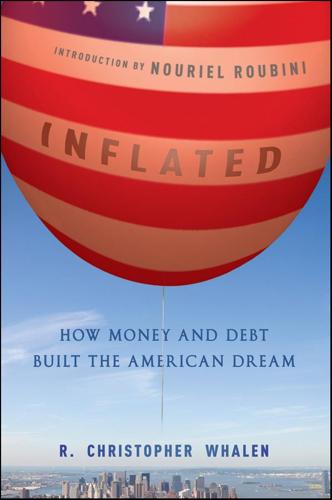
Inflated: How Money and Debt Built the American Dream
by
R. Christopher Whalen
Published 7 Dec 2010
Indeed, with the landslide victory over William Jennings Bryan by the Republicans in 1900, the business community loudly rejected Progressive reform. To the contrary, the Money Trusts believed that the way was clear for even more bold acts to expand their power and limit competition, particularly in industries such as steel and oil. However the members of the Grand Old Party, as Republicans became known during and after the Civil War, did not anticipate Theodore Roosevelt. Chapter 4 The Rise of the Central Bank President William McKinley was the sort of Republican that the business community could rely upon to support the consolidation of industries and the rise of the Money Trusts. Just a month before President McKinley began his second term in office, the U.S.
…
Steel was just one example of the way in which the trust operators manipulated prices and limited competition, and all with the blessings of the Republican Party’s candidate in the White House and a majority in the Congress. McKinley’s Vice President, Garret Hobart, typified the views of the Republican mainstream with respect to the Money Trusts when he said at the time of his election in 1896 that “corporations and aggregations of capital do not make it impossible for a poor man to climb up. The rich man of today is the poor man of to-morrow.”3 Unfortunately, the key operational strategy of the Money Trusts was to limit competition. The death of Vice President Hobart at the end of McKinley’s first term illustrates just how conservative was the government of the United States in 1900.
…
The Pujo Committee report published earlier in that year detailed the collusive practices among banks and the ownership ties via trusts that connected many banks to one another. Interlocking boards of directors and secret share ownership essentially tied many of the largest banks together under the control of a single “Money Trust.” Under pressure from the committee, in January of 1913 the great Robber Baron George F. Baker was forced to sell his stake in the Chase National Bank, breaking one of the key ties that comprised the Money Trust that the Pujo Committee investigated. Chairman Pujo and members of the Committee, as they were about to interrogate Baker and his colleagues under oath regarding their hidden control over several banks, declared the share sale by Baker as “a great victory.”29 Yet despite the public hearings and reformist rhetoric, the Pujo Committee ended its work and did not really do more than inconvenience the leaders of the largest banks.

The House of Morgan: An American Banking Dynasty and the Rise of Modern Finance
by
Ron Chernow
Published 1 Jan 1990
The intellectual and political leap most damaging to the House of Morgan was a spreading notion that a Wall Street trust had created the industrial trusts and governed their subsequent destiny. Minnesota congressman Charles A. Lindbergh, Sr., father of the future aviator, coined the title Money Trust, describing it as the most sinister trust of all. Senator George Norris later said of Lindbergh’s attack on the Money Trust that “the gentleman from Minnesota is entitled to more credit than any other member.”30 The Wall Street Journal correctly noted that the Money Trust was just a code name for Morgan. Legions of young muckraking reporters fanned out across Wall Street and rooted out insidious banking connections. Aided by his young assistant, Walter Lippmann, Lincoln Steffens exposed a web of links among ostensibly competitive New York banks.
…
Morgans, National City, and First National arrived at an understanding for participating together in all Latin lending. This Big Three agreement would vastly magnify Morgan power. (Kuhn, Loeb often formed a fourth member of their syndicates.) These same banks, ironically, would shortly be hauled before the Pujo Committee as the abominable Money Trust. What the public wouldn’t know was that the Money Trust had been forged, in part, by Washington itself in its quest for foreign influence. The new age of banker-government collaboration mellowed even the vehemently antigovernment Jack Morgan. After wrangling with Washington over a Honduran loan in 1912, he cabled Grenfell, “You will understand we do not wish accuse our own Government too loudly in view of necessary relations with them other foreign matters.”44 No less ideologically hostile to government than his father, Jack saw the need to mute his public anger.
…
But let us first note the awesome Morgan power that was revealed, lest the Money Trust theorists seem malcontents. Some 78 major corporations, including many of the country’s most powerful holding companies, banked at Morgans. Pierpont and his partners, in turn, held 72 directorships in 112 corporations, spanning the worlds of finance, railroads, transportation, and public utilities. In this era of relationship banking, board seats often meant a monopoly on a company’s business. During the previous decade, the House of Morgan had floated almost $2 billion in securities—an astronomical figure for the time. The Money Trust hysteria stemmed from a wave of bank mergers; Wall Street was snowballing into one big, Morgan-dominated institution.
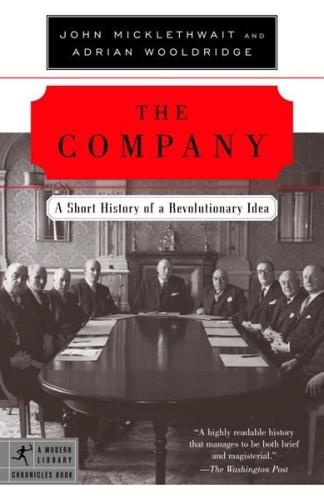
Company: A Short History of a Revolutionary Idea
by
John Micklethwait
and
Adrian Wooldridge
Published 4 Mar 2003
In 1906, Teddy Roosevelt’s administration launched a successful antitrust suit against Standard Oil, and in 1911, the Supreme Court ordered it to be broken up, creating indirectly the forerunners of Exxon, Amoco, Mobil, and Chevron. The next year, Morgan was summoned to the hearings into the money trust convened by Congressman Arsène Pujo. The Pujo committee concluded that the money trust held 341 directorships in 112 companies with assets of $22 billion.28 In 1913, after Morgan died, his directors quietly resigned at forty of the companies. America also set up a central bank in 1913, making the money trust less powerful. In 1914, the Clayton Antitrust Act restricted interlocking directorships, but only when they restrained trade. THE POPULARITY OF THE COMPANY Yet, the backlash against the corporation was far less powerful than many people had hoped.
…
By the time the Great Depression struck, the state had become home to more than a third of the industrial corporations on the New York Stock Exchange: twelve thousand companies claimed legal residence in a single office in downtown Wilmington.21 Most of the other industrial trusts converted to holding companies, too. They, unlike Rockefeller, often did so at the instigation of the most powerful trust of them all, the “money trust,” as Congressman Charles Lindbergh dubbed the masters of Wall Street. Since the United States had no central bank, J. P. Morgan and a few other bankers wielded enormous power. The bankers made use of the new holding companies themselves to get around rules preventing them from investing in shares (Morgan, for instance, controlled a Philadelphia broker, Drexel and Company).
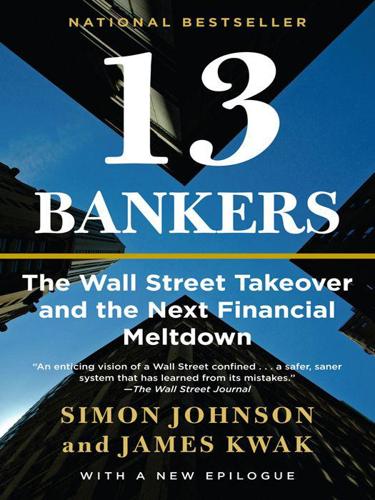
13 Bankers: The Wall Street Takeover and the Next Financial Meltdown
by
Simon Johnson
and
James Kwak
Published 29 Mar 2010
Chernow, House of Morgan, supra note 52; Stephenson, Nelson W. Aldrich, supra note 38; and Melvin Urofsky, Louis Brandeis: A Life (New York: Pantheon, 2009). 67. Quoted in “The ‘Money Trust,’ ” The New York Times, July 24, 1911, available at http://query.nytimes.com/gst/abstract.html?res=9F05E4DD1131 E233A25757C2A9619C946096D6CF. 68. For the reports of the Pujo Committee, see Federal Reserve Archival System for Economic Research, Money Trust Investigation. Investigation of Financial and Monetary Conditions in the United States Under House Resolutions Nos. 429 and 504, available at http://fraser.stlouisfed.org/publications/montru/. 69.
…
Perhaps the United States could in any case have avoided the fate suffered during the same period by Mexico or Brazil—where a small elite controlled a concentrated banking sector, with unfortunate economic results—and by many recent emerging markets.39 Had Jackson lost the Bank War, it is possible that the Second Bank might have gradually evolved into a modern central bank without distorting the political system to its own advantage.40 But this was not a risk that Jackson wanted to take, and his populist prejudices against financial elites (and his desire for increased presidential power) ensured that the American financial system would err on the side of fragmentation and decentralization. Although the resulting financial system was vulnerable to macroeconomic shocks, it was generally able to supply the capital needed by a growing business sector, and it did not soon generate a small elite with a dangerous amount of economic and political power. THE MONEY TRUST By the late nineteenth century, however, industrialization had created a powerful economic elite that held political power at all levels, with its supporters in substantial control of the Senate, the Republican Party, and the presidency. Seventy years after Jackson, it was time for another confrontation between an independent-minded president and concentrated economic power.
…
Opponents argued that the problem was a cabal of big banks that were secretly running the country. This fear was likely exaggerated, but there is no doubt that Wall Street banks played a critical role in creating the industrial trusts. In 1912, the House of Representatives, then controlled by the Democratic Party, commissioned an investigation of the “money trust” and its economic influence. (The investigation was proposed by Representative Charles Lindbergh Sr., who called the Aldrich plan a “wonderfully devised plan specifically fitted for Wall Street securing control of the world.”67) The Pujo Committee concluded that control of credit was concentrated in the hands of a small group of Wall Street bankers, who had used their central place in the financial system to amass considerable economic power.68 The committee report provided ammunition to Louis Brandeis, a prominent lawyer and future Supreme Court justice.
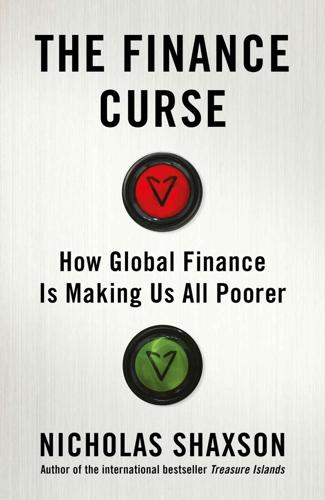
The Finance Curse: How Global Finance Is Making Us All Poorer
by
Nicholas Shaxson
Published 10 Oct 2018
There were monopolies in beef, sugar, whiskey, shipping, railroads, steel, cotton, textiles and furs, and the rulers of these fiefdoms amassed fortunes so great that their names (Rockefeller, Carnegie, Vanderbilt) still resonate today. But one force eclipsed them all, a financial monopoly. In 1913, nearly a decade after Veblen published Business Enterprise, a US Congressional committee produced its now-famous ‘Money Trust Investigation’, a report exposing a grand conspiracy of American business leaders to rig half the national economy. Rockefeller was implicated, but it was bigger than him or Standard Oil. The Money Trust was a monstrous interlocking lattice of at least eighteen major financial corporations and over 300 cross-cutting directorships and lines of control which directed much of industrial America and manipulated the financial clearing houses and the New York Stock Exchange.11 It was based on a secret rogues’ charter known insidiously as ‘banking ethics’ by which they agreed not to compete with each other.
…
The central problem isn’t finance, but too much finance, finance that is too powerful, and the wrong kind of finance, unchecked by democracy. Although monopolies are one of the most important methods of sabotage, there were many other varieties around in Veblen’s time. One of the biggest, which wasn’t mentioned in the ‘Money Trust Investigation’, also involved Morgan’s bank. This saga began in 1899 when William Cromwell, Morgan’s legal counsel, incorporated a new company, the Panama Canal Company of America. At the time, Panama was a province of Colombia and had a profitable railroad running across the narrow isthmus connecting North and South America.
…
See Eliot Jones, The Trust Problem in the United States, Macmillan, 1921, pp.58, 60. Jones adds that beyond Standard Oil’s control of 90 per cent of the market (p.58), ‘Not all of the remainder could properly be considered as independent.’ 11. Pujo Report, see especially US Senate Subcommittee on Banking and Currency, ‘Money Trust Investigations’, 18 December 1912, especially Exhibit 134-B: ‘Table Showing Affiliations of J.P. Morgan & Company, Guaranty Trust Company, Bankers Trust Company, First National Bank and National City Bank with Other Corporations Through Interlocking Directorates’. 12. I discovered this second family connection to the Vesteys after a relative of mine read Treasure Islands, which has a chapter on the Vesteys, and emailed me a summary of their history.

The Quiet Coup: Neoliberalism and the Looting of America
by
Mehrsa Baradaran
Published 7 May 2024
John Jacob Astor could at most invest, but J. P. Morgan’s wealth shaped markets; Morgan’s wealth could lend. Morgan’s monopoly was in credit, the supply of which was virtually limitless, whereas Astor’s was in fur, the supply of which—beavers—could not be multiplied like money. Morgan and the so-called money trusts could make industries or crush them by deciding to lend or not. Save the market or let it fail. This also presented a conflict of interest because “experience shows that their judgment is warped” by the power of their alliances. J. P. Morgan himself held seventy-two directorships, forty-seven of them in the largest corporations in the country.9 The irony of the dynamic market-shaping power of the financial oligarchs was its circularity—for “the fetters which bind the people are forged from the people’s own gold.”10 Brandeis said of the special power of the bankers that “if the bankers’ power were commensurate only with their wealth, they would have relatively little influence on American business.”11 They held power over ordinary Americans because they were essentially holding the citizens’ money hostage.
…
Relying on the Chicago School model of antitrust, the FDIC believed that laws limiting bank size were outdated fears made irrelevant due to modern technology. They claimed, in line with Bork and Stigler, that “as excess profits develop in any market, they will be competed away.” The FDIC also dismissed fears like those of Brandeis and FDR that money trusts like JP Morgan would have too much power compared to the state: “It is not clear that large organizations or highly concentrated industries are able to wield too much influence over government.” That clarity would come soon enough. Alan Greenspan, whom Reagan appointed as Fed chair in 1987, played a crucial role in justifying the legal transformation of finance, and in underwriting it as well through the nearly unlimited monetary power of his position.
…
The self-replicating nature of the virus means that the pools of capital will keep growing exponentially: the billions of the top 0.1 percent will soon metastasize into trillions. And as the economic chasm between rich and poor grows, so too will our political divides. In an earlier era, Supreme Court Justice Louis Brandeis blamed J. P. Morgan and his ilk for their excessive control over law and markets—the money trusts, as they were once called, controlled their customers’ deposits and thus the flow of credit, which was the life force of the economy. Things are much more complex today. To attempt to identify a singular villain is to slip into Marjorie Taylor Greene territory. The capital markets during the neoliberal decades have become so overdetermined that it is practically impossible, except in egregious circumstances, to differentiate between outright fraud or corruption on the one hand and merely “dancing while the music is playing” investing on the other.
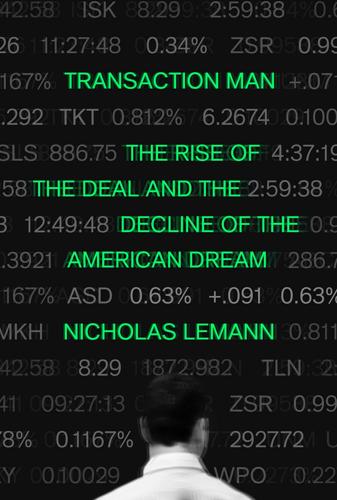
Transaction Man: The Rise of the Deal and the Decline of the American Dream
by
Nicholas Lemann
Published 9 Sep 2019
As president, Wilson passed the second major federal antitrust law, the Clayton Act, and established the Federal Trade Commission, a new regulatory agency meant to ensure open economic competition. When he established the country’s central banking system, the Federal Reserve, it was as a system of twelve regional banks, in order to avoid the danger of the control of credit by the “money trust” in New York. And he put Louis Brandeis on the Supreme Court. Though Adolf Berle was still a college student, and an unusually young one at that, during the 1912 campaign—too young to be a direct participant in these struggles—he entered adulthood fully persuaded that taming the power of centralized business was the overwhelming task facing the country.
…
Twenty years before The Modern Corporation and Private Property, Louis Brandeis wrote a searing series of articles for Harper’s Magazine, later published as a small book called Other People’s Money and How the Bankers Use It, that noted the widespread dispersion of ownership of stocks and bonds but treated it as a minor point. That was because, to Brandeis, it didn’t matter who nominally owned shares in big companies—the real control was in the hands of the “money trust,” meaning bankers, especially J. P. Morgan. They assembled the great corporations and then sat on their boards of directors and pulled the strings from there. Berle, in The Modern Corporation and Private Property—or for his entire life, really—barely mentioned banking and finance. His focus was on the industrial corporation.
…
During the devastating financial panic of 1907, it was Morgan, not the government, who convened the leading bankers and industrialists and made the arrangements necessary to keep the economy functioning—extracting along the way a promise from President Theodore Roosevelt that he would exempt U.S. Steel, in which Morgan’s bank was a major stockholder, from the antitrust laws. Morgan’s power generated enemies. In 1912 a Louisiana congressman named Arsène Pujo held sensational hearings on the “money trust,” which found that Morgan was its controlling member (Morgan and his partners together sat on the boards of seventy-two corporations). Louis Brandeis’s book Other People’s Money and How the Bankers Use It was based primarily on evidence unearthed by Pujo. Not long after enduring the indignity of testifying before Pujo’s subcommittee, Morgan died.
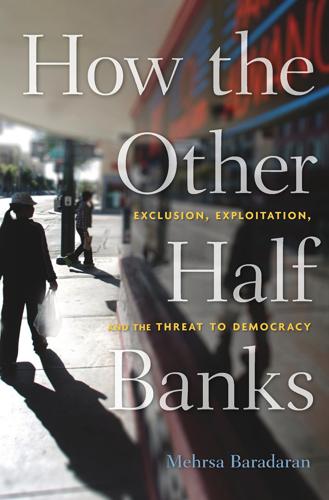
How the Other Half Banks: Exclusion, Exploitation, and the Threat to Democracy
by
Mehrsa Baradaran
Published 5 Oct 2015
.… The fetters which bind the people are forged from the people’s own gold.”74 The main problem with this control over the people was that the provision of credit was in the bankers’ hands, and any self-dealing on their part created unequal access to credit and favored those affiliated with the money trusts. He explained that “the granting of credit involves the exercise of judgment” and that “however honestly the bank officials may wish to exercise their discretion, experience shows that their judgment is warped by the existence of the all-pervading power of the Money Trust.”75 In addition to recommending conflict-of-interest legislation that would deter banker directorships, Brandeis suggested a more fundamental solution—turning banks into public utilities.
…
Chaudhuri, Changing Face, 49–51. 72. Woodrow Wilson, The New Freedom (New York: Doubleday, Page, 1918), 184–185. 73. Louis D. Brandeis, Other People’s Money and How the Bankers Use It (New York: Frederick A. Stokes, 1914) 18. J. P. Morgan, along with two New York banks, National City and First National, constituted the Money Trust. 74. Ibid., 18–19. 75. Ibid., 49. 76. Ibid., 64. 77. Ibid, 146. Justice Holmes conceded that even if the state did not take on nationalized banking, private banking could compete efficiently in the market if it could focus on people instead of profits, which he termed “democratic banking.” 78.
…
L., 198, 199–200 Microcredit, 162, 169–173, 245n98, 295–296n48, 296nn49,50 Middle class: reliance on alternative financial instruments, 1; banking for, 64; creation of, 110; blamed for financial crisis, 160 Middleman, eliminating, 223 Military, 126, 131, 205 Military Lending Act, 126 Miller, Geoffrey, 155 Min, David, 156, 157 Mission drift, 99 Mobile banking, 177–179, 300n78 Mobility, economic, 222 Money: supply of, 13, 15; creation of, 13–14, 231n13; other people’s, control of, 42; control of, 42–43, 57–58; hoarding, 196–197, 305n76 MoneyGram, 175 Money orders, 138, 196 Money transfers, 175 Money Trust, 243n73 Montgomery Ward, 186–187 Moral hazards, 21, 234n29 Morgan, Donald, 130 Morgan, J. P., 40, 42 Morris, Arthur, 94, 98, 214 Morris Banks, 94–99, 153, 181 Morris Plan, 96 Mortgage lending: and GSEs, 18; race in, 47; redlining, 47, 50, 90, 154, 163; discrimination in, 49; by savings banks, 79; by savings and loans, 92–93; Adjustable Rate Mortgages, 93; standardization of, 150; subprime loans, 156, 157, 158–159, 160, 288n75.

In FED We Trust: Ben Bernanke's War on the Great Panic
by
David Wessel
Published 3 Aug 2009
Populism and the campaign to promote silver as a supplement to gold died when McKinley beat Bryan in the 1896 presidential election, but tension between borrower and lender, farmer and financier, worker and Wall Street, didn’t disappear. Hostility to big money ebbed and flowed, but American workers, farmers, and debtors had a recurrent suspicion that “Wall Street” or the “money trust” or “the robber barons” were responsible for economic misery. This recurrent American suspicion went into remission during much of the 1990s and 2000s when Americans enjoyed rising stock prices and climbing home values, but it returned with virulence during the Great Panic with multibillion-dollar bailouts of banks and bonuses paid to executives of failing companies.
…
Earlier panics had struck banks that came under the sheltering umbrella of the clearinghouses. This panic hit the trust companies, which lived outside the clearinghouse safety net. That led New York bankers to realize the financial system had grown too big and complex for them to manage, while at the same time the public and many politicians decided that the time had come to rein in “money trust.” “The Panic of 1907 was an indication of the extent to which the ability to control crises had moved out of the hands of the New York bankers,” historian Gabriel Kolko wrote. But if the need for a central monetary authority was obvious, there was little agreement on who should control it or even what its objectives should be.
…
William Jennings Bryan charged that the plan would leave bankers “in complete control of everything through control of our national finances.” In May 1912, Representative Arsène Pujo, a Louisiana Democrat and dissenting member of the National Monetary Commission, convened high-profile hearings into “the money trust.” Among those called to testify was J. Pierpont Morgan, less than a year away from his grave, his great service to the nation of five years earlier largely forgotten. Pujo’s final report found “a great and growing concentration of the control of money and credit in the hands of a few men.” In 1912, Wilson — standard-bearer of the Progressive movement, governor of New Jersey, and former president of Princeton University — was elected president, beating both Republican William Howard Taft, the incumbent, and Teddy Roosevelt, who ran as a third-party candidate.
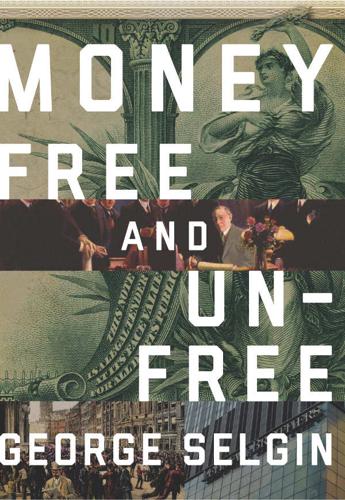
Money Free and Unfree
by
George A. Selgin
Published 14 Jun 2017
A month before it was finally submitted to Congress, Charles Lindbergh Sr. assailed the plan as a scheme to preserve, and even enhance, the “Money Trust’s” share of the nation’s bank reserves, by requiring state as well as national banks subscribing to the proposed National Reserve Association to conform to the National Bank Act’s reserve requirements (U.S. Congress 1911: 46–47). Rather than take up the Aldrich bill, the House Banking Committee resolved itself into two subcommittees. The first, assigned to Arsène Pujo (D-LA), who had served on the National Monetary Commission, took on the task of investigating the Money Trust—which is to say, the very same banking interests that had played so prominent a part in shaping the Aldrich plan.
…
The first, assigned to Arsène Pujo (D-LA), who had served on the National Monetary Commission, took on the task of investigating the Money Trust—which is to say, the very same banking interests that had played so prominent a part in shaping the Aldrich plan. The other, headed by Carter Glass (D-VA), a conservative Democrat, was assigned the task of developing an alternative plan for currency reform. Although this division prevented Pujo himself from being made responsible for currency reform, the Money Trust investigations put any plan even vaguely associated with Wall Street on the defensive. This more than countered the National Citizens’ League’s efforts, while causing its leaders to put as much distance as possible between their own proposals and the one put forward in the name of Aldrich’s Commission.
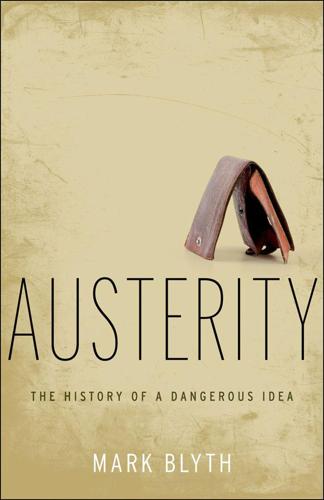
Austerity: The History of a Dangerous Idea
by
Mark Blyth
Published 24 Apr 2013
Yet at the end of the day, how can you run an economy, especially a pan-European monetary economy, without trust as its basis? While the German word for debt has the same root as the German word for guilt, schuld, the Italian word for belief forms the English root for the word credit, credere. At their base, money, trust, guilt, and faith are all norms, not rules. Smith’s self-interest and ordoliberal rules can only get us so far. Seen from this vantage, democracy is similarly not an end in itself, since it is little more than an inflation-causing pathology from which only rules, not discretion, can save us. Replacing a government or two in the Eurozone is simply, then, what needs to be done.
…
The solution was to tie the notional value of different national currencies to gold at a fixed rate, gold being a conventional store of value that both is internationally exchangeable and cannot (easily) be altered by governments.5 X units of currency Y therefore could be exchanged everywhere for Z units of gold. And if all countries “pegged” their currencies to gold in this way, it facilitated trade by solving the fiat money/trust problem. Since each country is pegged to gold at a fixed rate, when you earn foreign currency through trade, you can, in principle, take it back to the issuing country’s central bank and ask for the gold that backs it. Because the paper you now hold is convertible for gold at a fixed rate, the paper will be exactly equal in value to gold.
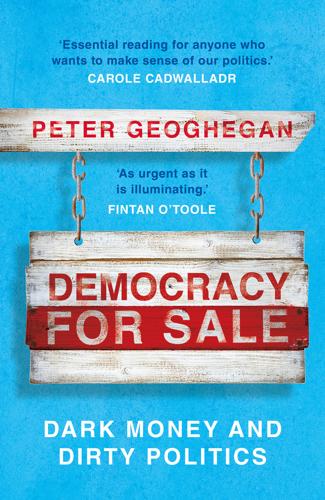
Democracy for Sale: Dark Money and Dirty Politics
by
Peter Geoghegan
Published 2 Jan 2020
See also https://twitter.com/eastantrimmp/status/1066330424585187337; accessed 20 Jan. 2020. 35 Peter Geoghegan, Seth Thévoz and Jenna Corderoy, ‘Revealed: The elite dining club behind £130m+ donations to the Tories’, openDemocracy, November 2019. 36 Seth Thévoz, ‘Inside the elite Tory fundraising machine’, openDemocracy, December 2019. 37 Nicholas Watt, ‘“Secretive” Tory dining clubs bankrolling election campaign in key seats’, Guardian, November 2014. 38 Jamie Mann and Ally Tibbitt, ‘Electoral Commission probes £319,000 Tory “dark money” trust’, The Ferret, June 2018. 39 ‘Fifth of Tory election donations from “dark money” trust’, STV News, July 2018. 40 Niall McCracken, ‘CRC Brexit donation to DUP not reported to watchdog’, BBC, December 2018. 41 Paul Hutcheon, ‘Scots Tory in £435,000 Brexit “dark money” row facing questions by MPs’, The Herald, November 2018. 42 Letters to and from Digital, Culture, Media and Sport Committee, House of Commons.
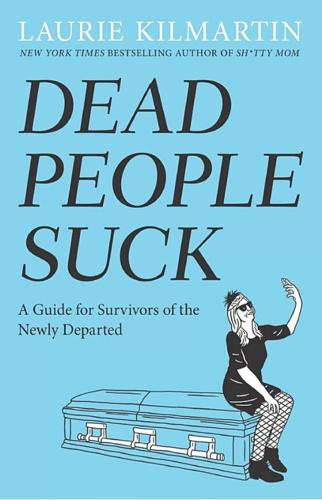
Dead People Suck: A Guide for Survivors of the Newly Departed
by
Laurie Kilmartin
Published 13 Feb 2018
As we waited for him to wake up, Patrick, my sister, and I began chatting about an older marriage. From the past. Between Michael and Sarah. There was money in their marriage, on both sides, from Michael’s job and Sarah’s family. For our entire lives, my sister and I had been obsessed with that money. It seemed to us a fascinating amount of money. Second house money. Trust fund money. Political influence money. “Okay,” one of us said, “who had more money: the Sarah side of the family, or the Michael side of the family?” “Oh, the Michael side, definitely,” Patrick said, with full confidence. Then Dad, who would not take this secret to his grave, arose from his slumber and croaked, “The Sarah side.
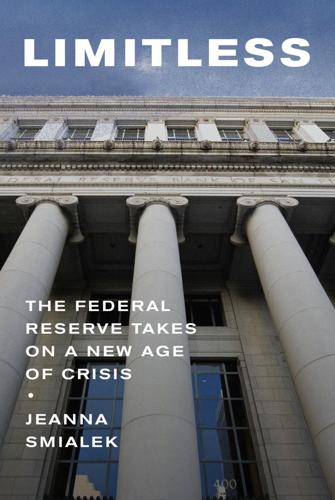
Limitless: The Federal Reserve Takes on a New Age of Crisis
by
Jeanna Smialek
Published 27 Feb 2023
It was a plan created by bankers that envisioned a system effectively run by them, and public opinion was fast turning against the leaders of American finance. By the time Woodrow Wilson had taken office in 1913, Congress and voters had begun to see the banking industry as an oligopoly, an industry where power is concentrated in too few hands and customers suffer for it. Congressional lawmakers had been publicly investigating the so-called Money Trust, a spectacle that captured the press’s attention and peaked with a headline-grabbing interrogation of Morgan himself at a hearing in 1912 (a reputational besmirchment the senior banker found so incredibly painful that his family blamed it for his death mere weeks later).[53] As Glass and Wilson worked on a plan to reform the currency against that finance-skeptical backdrop, the president insisted that the new central bank must be under public control.
…
See employment/labor market Lamont, Thomas, 53n Laubach, Thomas, 115, 128 Lehman Brothers, 90, 93, 94 Lehnert, Andreas: “cover the waterfront” strategy for pandemic response, 163–4, 167–8; financial stability division and disaster planning role of, 163–4, 163n, 212; housing market presentation by, 91; pandemic rescue program planning by, 136–7, 151–2, 158–9, 162, 212 Leonard, Elissa, 15–16, 17–18, 18n, 141n Libra, 152–3, 153n, 274 Lincoln, Abraham, 48, 287 Linton, Louise, 140–1, 141n, 193 lobby, coining of phrase, 118 Logan, Lorie, 32–3, 34, 143, 149, 334n4, 334n6 Lombard Street (Bagehot), 50–1, 336n37 M macroeconomic management, 61–2, 82, 86, 130, 230, 341n9 Main Street program, 204n, 212–14, 238, 245–9, 294, 301, 349n3 Marcus, David, 152–4 Martin, William McChesney, Jr., 74, 76–8, 81, 108 masks and face coverings, 219, 222–3 McAdoo, William, 59–60 McCabe, Thomas, 72–4 McConnell, Mitch, 138, 178, 179, 191, 192, 251–2, 267 McFadden Act, 62 meme stocks, 274, 291–2 Mester, Loretta, 154n Metropolitan Club, 11, 333n1 Mexico, 139, 145, 197, 266, 334n11 Missouri, 59 Mnuchin, Steven: allocation of money for programs, 192, 199, 208, 211, 213, 247–8, 251–2, 253–62, 347n10; background, education, and expertise of, 140–1, 170, 192–4; character and personal style of, 140, 141, 192–5; confirmation hearing of, 193–4; deregulation under, 104, 169; economic ideology of, 256–7, 294; Group of Seven call by, 142, 143; January 6 riots and loyalty to Trump, 281n; junk bond–buying discussion with Powell, 210; pandemic rescue program role of, 161–2, 165, 175–81, 183–4, 188–9, 191–5, 199, 205, 206–7, 208, 212, 214, 251–2, 345n25; planning response to pandemic with Powell, 139–40, 141; post-government career of, 298–9; Powell firing threat from, 107; relationship with Powell, 139–40, 141; role in selection of Powell, 20–1; Treasury secretary role of, 104, 192–5; 2020 presidential election and continuation of pandemic relief efforts, 253–62, 263; wealth of, 140, 298–9 monetary policy: economic slowdown and, 108–10, 111–16, 341n9; Fed Listens outreach events on, 22–3, 27–8; financial crisis of 2008 and, 4–5, 24–6, 90–8; full employment and, 22, 77–8, 80, 96–7, 97n, 101, 233–4, 239–44, 250; inscrutability of, 23, 23n; interest rates, economic trends, and, 111–16; modern monetary theory and inflation, 351n1; pandemic and, 4–5, 29–35, 38–41, 238–43; Powell role in as Fed governor, 17–18, 129; review of under Powell, 21–2; Taylor rule, 341n22; voting on by Fed governors and regional bank presidents, 13, 13n, 130 money/currency: Bretton Woods system and linking dollars to gold, 75–6; cash supply and flow management by Fed, 3, 12–13; cash supply and withdrawals at start of pandemic, 39–40, 335n10; concept and history of, 44–6, 335nn11–12; control over by Fed and political goals, 8–9; creation by Fed, 5; creation of during pandemic, 4, 176, 185–6; Federal Reserve note, 57; fiat currency, 48–50, 272; global financial system with dollar at core of, 75–6, 82, 196–8; greenback currency, 48–50; impact of pandemic on currency markets, 141; money supply as driver of economic outcomes, 79–80; national bank notes, 48, 53; pandemic and role of the dollar in global finance, 196–8; specie, 49, 335n11. See also digital currency money market mutual funds and rescue program, 31, 103, 147–9, 151, 157, 163, 171, 182–3, 208, 216, 238, 292–3 money printer memes and paraphernalia, 185–6 Money Trust, 56 moral hazard, 94, 120 Morgan, John Pierpont, 52–4, 53n, 54n, 56, 60–1, 66 Morgan Stanley, 155–6, 157, 169 Morse, Charles, 52 mortgage debt. See housing market and mortgage debt Mulvaney, Mick, 107, 222 municipal/state and local government bonds, 152, 167–8, 207–9, 211, 213, 237–8, 248, 258–9, 294, 350n10, 350n31 N national bank notes, 48, 53 National Reserve Bank of Washington, 58 Network for Greening the Financial System (NGFS), 266–7, 269–70, 270n New Deal, 67 news conferences.
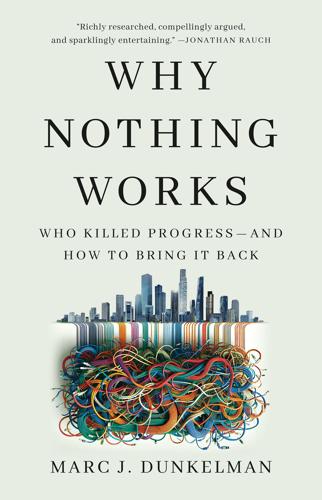
Why Nothing Works: Who Killed Progress--And How to Bring It Back
by
Marc J Dunkelman
Published 17 Feb 2025
And the courts opened the door to new worker rights as well: by 1914, several states had enacted court-approved statutes outlawing child labor and limiting work hours.128 But it was Wilson’s embrace of Hamiltonianism that defined his two terms.129 Most important, he championed the bill establishing the Federal Reserve—a publicly chartered central bank that functionally replaced J. P. Morgan and the so-called money trust that effectively set the nation’s monetary policy. Perhaps just as important, after a decades-long fight over the federal government’s authority to impose income taxes, Wilson signed into law the Revenue Act of 1913 following ratification of the Sixteenth Amendment. Those tax dollars would prove to be the lifeblood of the bureaucratic expansion to follow.
…
Reformers might have been tempted, in the wake of the First New Deal’s unraveling, to revert to their old Jeffersonian ideology. And almost on cue, populists emerged to demonize big business with an eye toward tearing it down. Louisiana senator Huey Long’s famous call for a program to “Share Our Wealth” spoke more directly to old Jeffersonian fears about roguish elements like the old money trust.90 But by the mid-1930s, many erstwhile champions of progressivism’s aversion to bigness began to see the limitations of that approach. Particularly in cases where “natural” monopolies prevailed—utilities, for example, served markets where the costs of production or distribution were too much to split between firms—trust-busting seemed far-fetched.
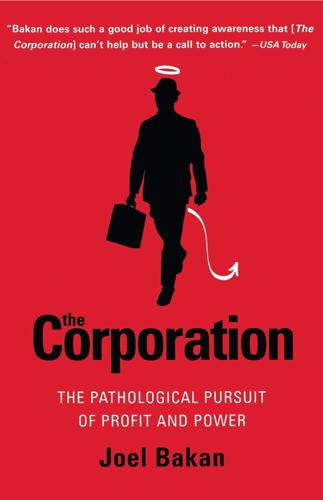
The Corporation: The Pathological Pursuit of Profit and Power
by
Joel Bakan
Published 1 Jan 2003
Unable to influence managerial decisions as individuals because their power was too diluted, they were also too broadly dispersed to act Page 15 THE CORPORATION 15 collectively. Their consequent loss of power in and control of large corporations turned out to be managers' gains. In 1913, a congressional committee set up to investigate the "money trust," led by Congressman the management is virtually self-perpetuating and is able through the power of patronage, the indifference of stockholders and other influences to control a majority of stock." Shareholders had, for all practical purposes, disappeared from the corporations they owned. With shareholders, real people, effectively gone from corporations , the law had to find someone else, some other person, to assume the legal rights and duties firms needed to operate in the economy.
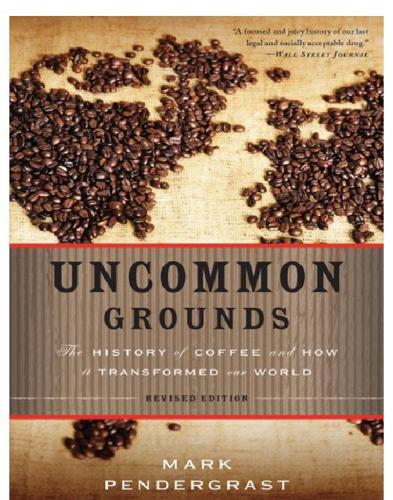
Uncommon Grounds: The History of Coffee and How It Transformed Our World
by
Mark Pendergrast
Published 2 Jan 2000
“The newspapers never consider anything to be natural; they must make it mysterious, and they love to talk about millions and millions, and impress upon your mind the wicked New Yorkers and the capitalists.” Sielcken Snaps His Fingers On May 16, 1912, Hermann Sielcken appeared as the first witness before the “Money Trust Investigation” congressional subcommittee. Arrogant and unrepentant, he did not back down an inch, claiming that the valorized coffee had no effect whatsoever on the price. During these hearings Sielcken and committee lawyer Samuel Untermyer crossed swords repeatedly. Untermyer asked Sielcken, “The idea was to keep that surplus [of coffee] off the market, was it not?”
…
James) United Fruit Company United Nations Food and Agriculture Organization United States Agency for International Development (USAID) Agriculture Department CIA Civil War coffee consumption in Commodity Futures Trading Commission Federal Trade Commission (FTC) first national advertising in Food Administration Food and Drug Administration Grain Stabilization Board and International Coffee Agreement Justice Department Money Trust congressional investigation Office of Price Administration (OPA) Prohibition in Pure Food and Drugs Act reexports of coffee by Revolutionary War State Department Trinity coffee barons in U. S. Marines Untermyer, Samuel Urena, Daniel Uribe, Andrés Utz Kapeh Good Inside Vacuum packaging Valdivieso, Ricardo “Rick,” Vargas, Getúlio Vending machines Venezuela Versailles Treaty Vertical integration Victorian America: Transformations in Everyday Life, 1876-1915 (Schlereth) Vienna Vietnam Violent Neighbors (Buckley) Visser, Margaret Wages.
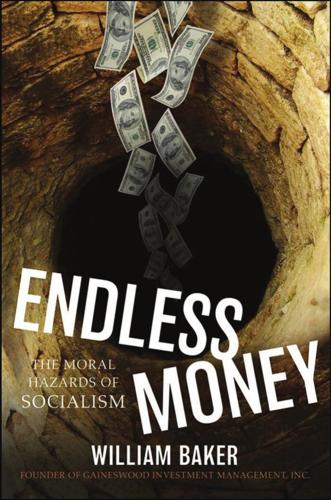
Endless Money: The Moral Hazards of Socialism
by
William Baker
and
Addison Wiggin
Published 2 Nov 2009
For the perspective on what this means in the world of money, who better than J. Pierpont Morgan to comment under oath when being browbeaten by Samuel Untermeyer, counsel to the House Banking and Currency Committee, a formative Wall Street lawyer who in 1911 first raised the specter of there being a “Money Trust” dominated by big New York banks:3 Untermeyer: Is not commercial credit based primarily upon money or property? Morgan: No, Sir. The first thing is character. Bending to the Modern World 279 Untermeyer: Before money or property? Morgan: Before money or anything else. Money cannot buy it. Untermeyer: If that is the rule of business, Mr.
…
The Federal Reserve balance sheet is published weekly at http://www. federalreserve.gov/releases/h41/. 3. James Grant, Money of the Mind (New York: Farrar Straus Giroux, 1992), 124–125. 4. R.F. Bruner and S.D. Carr, The Panic of 1907: Lessons Learned From the Market’s Perfect Storm (Hoboken, NJ: John Wiley & Sons, Inc., 2007), 182–183. References Money Trust Investigation: Hearings, I, p. 1084, U.S. Government. 5. F. A. Hayek, The Fatal Conceit: The Errors of Socialism (Chicago: The University of Chicago Press, 1988), 90. 6. Emily S. Rosenberg, Financial Missionaries to the World: The Politics and Culture of Dollar Diplomacy, 33. 7. Emily S. Rosenberg, Financial Missionaries to the World: The Politics and Culture of Dollar Diplomacy (Durham & London: Duke University Press, 2003), 21, 24, 77, 154. 400 NOTES 8.

Capitalism in America: A History
by
Adrian Wooldridge
and
Alan Greenspan
Published 15 Oct 2018
No state was more assiduous in wooing corporations than Delaware. By 1930, the state had become home to more than a third of the industrial corporations on the New York Stock Exchange: twelve thousand companies claimed legal residence in a single office in downtown Wilmington. The most powerful of the trusts was “the money trust,” as Charles Lindbergh, father of the famed aviator and a congressman from Minnesota, dubbed Wall Street, and the most powerful money-truster by far was J. P. Morgan. Having demonstrated his prowess in consolidating railroads during the great shakeout produced by the depression of the 1890s, Morgan extended his skills to a wider range of industries as the economy recovered, but overcapacity remained.
…
Morgan’s appearance before Arsène Pujo’s congressional committee. In 1905, Morgan had contained the crisis by forcing his fellow bankers to support the banking system. In 1912, Pujo, a congressman for Louisiana’s seventh district, forced him to appear before his committee and railed against his machinations. The Pujo Committee concluded that the money trust held 341 directorships in 112 companies with assets of $22 billion, and in 1913, after Morgan’s death, his directors quietly resigned from forty of the companies. Many angry defenders of the status quo ascribed J. P. Morgan’s death in Rome a few months after appearing before the committee to the strain of his public vilification.

The Color of Money: Black Banks and the Racial Wealth Gap
by
Mehrsa Baradaran
Published 14 Sep 2017
The New Deal was a radically progressive reordering of American business regulation. Its centrally controlled economic planning, Keynesian stimulus programs, and foundational social welfare infrastructure made it the closest Americans came to democratic socialism.10 That too was led by the South. The South had long fought the northern “money trusts" and advocated more government intervention in breaking up monopolies, loosening credit, and regulating financial markets. The New Deal achieved all of these aims by restructuring financial markets to achieve specific policy goals.11 This combination of progressive banking reform and a regressive racial hierarchy meant that postwar American prosperity was propelled through a mortgage and consumer credit apparatus that was exclusionary.
…
Though Harris, like the New Deal progressives, was wary of the “un-slackening growth in the size and power of white financial and industrial organizations," he recognized that this was the only way black banks could overcome their impoverished and segregated communities.102 It was better to join forces with a powerful bank, even a Wall Street “money trust" powerhouse, than to go it alone. He knew that black banks would lose their autonomy and independence, but Harris was skeptical that they could ever operate successfully as stand-alone entities. But riding on the wave of backlash against big banking, the New Deal reforms cut off this potential structure in its prohibition against conglomerates.103 The frustrating dilemma of black banks is highlighted when contrasted with banks created by Italian, Jewish, German, and Irish immigrants that they are often compared to.
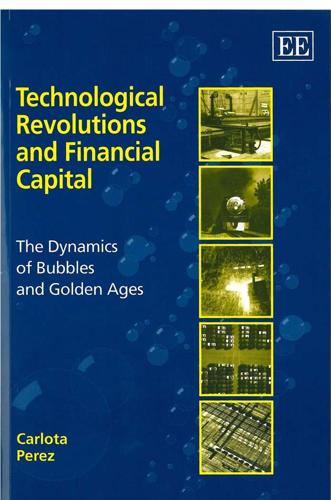
Technological Revolutions and Financial Capital: The Dynamics of Bubbles and Golden Ages
by
Carlota Pérez
Published 1 Jan 2002
In the 1960s in the USA, the importance of profit squeezing through accountancy practices and legal loopholes became so large that there were frequent complaints about the supremacy of financial managers over those of production and marketing. In the years before the First World War, in the USA, ‘Wall Street was under constant scrutiny from one government agency or another’ and so were banks and insurance firms. The uncovering of the so-called ‘Money Trust’ by the Glass 223. Galbraith (1990:1993) p. 62. The Changing Nature of Financial and Institutional Innovations 143 group made the need for regulation clear. Among the consequences was the Glass–Owen Act, creating a timid forerunner of the Federal Reserve System, as another attempt to create a sort of central bank in the United States.224 Many of those manipulative practices will overflow into the irruption phase, after the next big-bang, as parts of the rationalization and the survival tactics of the existing production structure that continues battling for profits and markets behind the astounding economic success of the technological revolution.

The Greed Merchants: How the Investment Banks Exploited the System
by
Philip Augar
Published 20 Apr 2005
Rockefeller, Andrew Carnegie and Jay Gould who put together the giant corporations – were not much liked either. Congress passed the Sherman Anti-Trust Act of 1890 to curb monopoly power and glared darkly at the investment banks who appeared to aid and abet big business. The House of Representatives Banking Committee was formed in 1912 to investigate what was disapprovingly called the ‘Wall Street Money Trust’, and the following year America’s central bank, the Federal Reserve, was set up to keep an eye on money markets. True to what would become form, the Federal Reserve Bank of New York was initially headed by a distinguished Wall Streeter, Benjamin Strong. Smouldering suspicion of Wall Street was kindled after 1914 when Louis D.
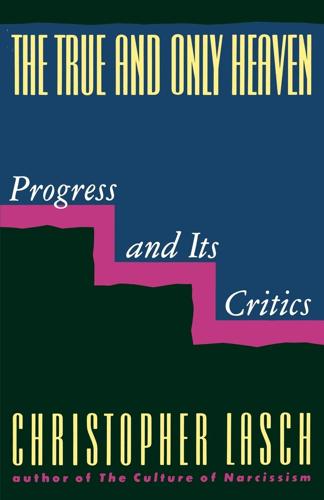
The True and Only Heaven: Progress and Its Critics
by
Christopher Lasch
Published 16 Sep 1991
In the twentieth century, revolutions have typically taken the form of wars of national liberation, and something of the same impulse, it can be argued, underlay working -215- class radicalism in the nineteenth century. Workers saw their oppressors, the "capitalists" and moneylenders, as outsiders more often than they saw them as members of their own communities—agents of a foreign power, in effect, of a "paper system" or an international "money trust" that robbed Englishmen or Americans of their inherited rights and threatened to reduce them to slavery. The appeal to the past, in other words, also implied an appeal to local, regional, or national solidarity in the face of outside invasion—something far more substantial than the hypothetical solidarity of the international proletariat.
…
McCann, Willis: on nostalgia, 106 McCarthy, Joseph, 25, 37, 99, 217, 218, 456, 468 Macaulay, Thomas Babington: on progress, 57-58; on social history, 119 McClosky, Herbert: on democracy, 465 ; on psychology of conservatism, 463 Maccoby, Eleanor: on middle-class family, 46I McCown, Chester Carlton: on progress, 38I-82 Macdonald, Dwight, 26, 30 MacFarlane, Robert: on proprietorship, 205 McGill, Ralph: on Kennedy assassination, 470 McGovern, George, 217, 507, 525 Machiavelli, Niccolò, 49, 52, 173, 184, 187, 233, 235, 262, 264 ; and Burke, 131 -32; on Christianity, 174 ; on Fortune, 50, 263 MacIntyre, Alasdair, 172 McKinley, Donald: on working-class family, 462 McKinley, William, 470 Macpherson, C. B., 197, 199, 200, 203 Macune, C. W., 218 ; on money trust, 219 Macy, John: on Massachusetts, 419 Mailer, Norman: on JFK, 469 -70 n. Maine, Henry, 140, 159 ; on status and contract, 137, 138 Main Street (Lewis), 424 Making of the English Working Class, The (Thompson), 210 Malcolm X, 471 Malinowski, Bronislaw, 424 Malloy, Ione: on busing, 501 -4; on ethnic solidarity and racial justice, 502 -3 Malthus, Thomas, 272 managerial revolution, 437 ; see also professional-managerial class Managerial Revolution, The (Burnham), 510 Mandeville, Bernard, 52, 197 n., 253 n.; on luxury, 53 Mann, Horace: attacked by Brownson, I87-88; on "internal and moral restraints," 60 Mannheim, Karl, 107 ; on utopianism, 41 -42 n., 83 "Man the Reformer" (Emerson), 271, 277 -582- Mao Tse-Tung, 157 Marcuse, Herbert, 26, 28, 29 Marie Antoinette, 129, 130, 131, 227 -28 Marinetti, F.
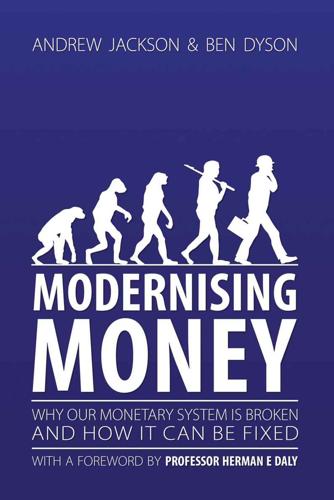
Modernising Money: Why Our Monetary System Is Broken and How It Can Be Fixed
by
Andrew Jackson (economist)
and
Ben Dyson (economist)
Published 15 Nov 2012
While this method is perfectly legitimate, it is also possible to account for money creation under a reformed system using the conventional approach. To see how this can work, it must be noted that within countries, those that use a currency constitute an economic community that co-operate in the production of goods and services: those that accept money trust that there will be things available to spend the money on in the future, entailing production by other members of the community. Holding currency therefore entitles the holder to a share of the productive capacity of the economy in line with their money holding. What backs money is therefore not bonds or loans, but the belief that there will be something available to swap that money for in the future.
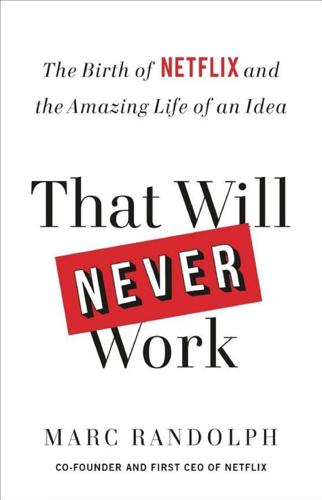
That Will Never Work: The Birth of Netflix and the Amazing Life of an Idea
by
Marc Randolph
Published 16 Sep 2019
And within a few days, one of their analysts was calling the office, asking questions that I didn’t have great answers for yet. Eventually, they decided to fund us. But that had less to do with my pitch than Reed’s presence. Reed was a known quantity, venture capitalist catnip. He’d orchestrated major deals, he’d appeared—reluctantly—on the cover of USA Today next to his Porsche. People with money trusted him because he had a track record of making them money. Even in 1998, he had around his head the halo of Silicon Valley success: when Pure went public, well before the merger with Atria, he made a lot of people rich. More importantly, he had a track record of solving seemingly unsolvable problems.
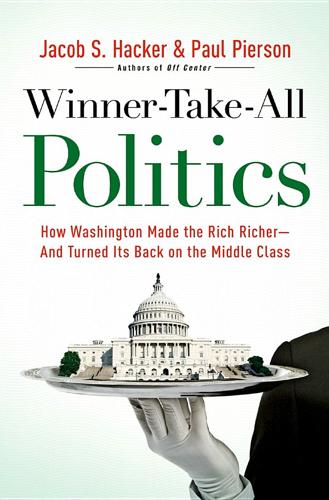
Winner-Take-All Politics: How Washington Made the Rich Richer-And Turned Its Back on the Middle Class
by
Paul Pierson
and
Jacob S. Hacker
Published 14 Sep 2010
And yet, by the early twentieth century, the concern took a new, more modern form: the classical fear of a hereditary aristocracy had been replaced by a concern with the depredations of large-scale industrial capitalism and the distortions created by financial speculation. By the time TR spoke of controlling “the mighty commercial forces,” Progressives had zeroed in on bigness and the banks as the great challenges to democracy of the day. Indeed, in the very year of Roosevelt’s fiery speech, “the money trust” became the focus of highly publicized congressional hearings that revealed widespread abuses in the banking industry. It then became the subject of one of the most important muckraking works of the era, Other People’s Money, and How the Bankers Use It—a damning indictment of the “financial oligarchy” that increasingly dominated industry and government.
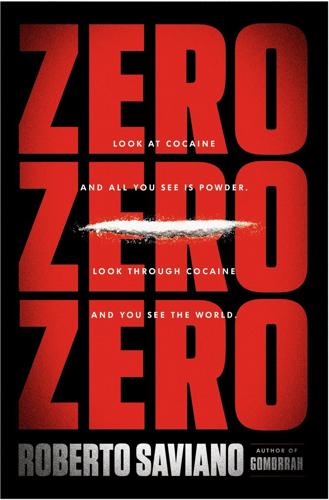
ZeroZeroZero
by
Roberto Saviano
Published 4 Apr 2013
As in postwar Europe, billions of dollars were supposed to pour in to revive the country, help Colombians free it of cocaine, and support those campesinos who agreed to convert their fields back to far less profitable but legal crops. But the actual plan, signed by Bill Clinton in 2000 and reconfirmed by George W. Bush until the end of his term, takes a different direction. A slow and costly social and economic transformation suddenly seems like a utopia. There’s not enough money, trust, or consensus. There’s not enough time. Funding depends on being able to show results. So everything rests on the quickest option, that of force. The use of force translates, first of all, into a war on cocaine. Victory will be declared only when not a single leaf of cocaine is left growing in Colombia.
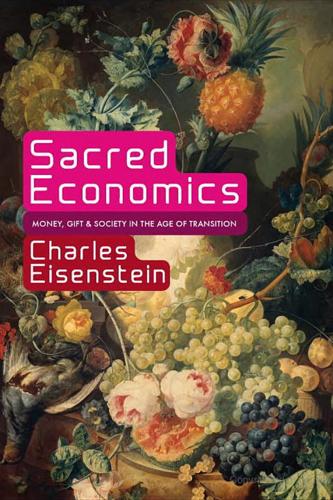
Sacred Economics: Money, Gift, and Society in the Age of Transition
by
Charles Eisenstein
Published 11 Jul 2011
It is the same mind-set that refrains from generosity, because what if I cannot afford it? The self-trust I advocate is inseparable from the basic premise of this book, laid out in Chapter 1: we are born into gratitude, born into the need and the desire to give. In other words, trust that it is not your true desire to comply with the conversion of the world into money. Trust that you want to do beautiful things with your life. In right livelihood, then, I suggest that we orient ourselves toward our need and desire to give. I suggest that we look at the world with eyes of, “What opportunity is there to give?” and “How may I best give of my gifts?” Hold that intention in mind, and unexpected opportunities arise.
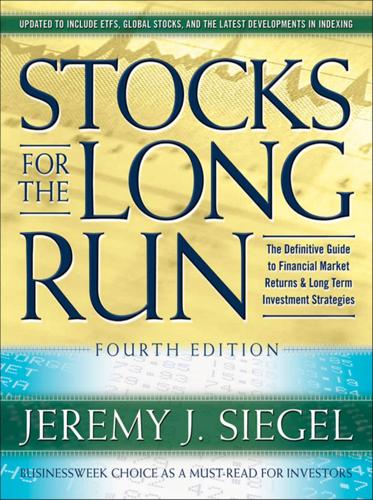
Stocks for the Long Run, 4th Edition: The Definitive Guide to Financial Market Returns & Long Term Investment Strategies
by
Jeremy J. Siegel
Published 18 Dec 2007
Dave: Allan says that we are entering a “New Economy,” spurred by a communications revolution that is going to completely change the way we do business. Those stocks that we owned are Old Economy stocks. They had their time, but we should be investing for the future. I know these Internet stocks are volatile, and I’ll watch them very carefully so we won’t lose money. Trust me. I think we’re finally on the right track. TIME: MARCH 2000 Dave: Jen, have you seen our latest financial statements? We’re up 60 percent since October. The Nasdaq crossed 5,000, and no one I’ve heard believes it will stop there. The excitement about the market is spreading, and it has become the topic of conversation around the office.
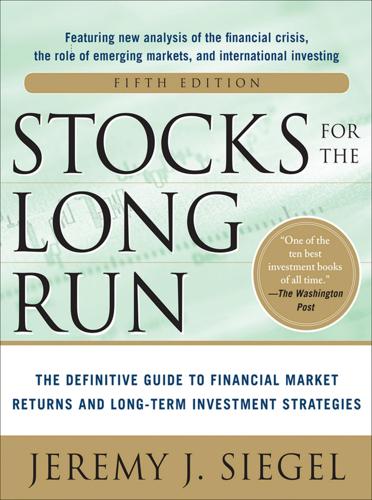
Stocks for the Long Run 5/E: the Definitive Guide to Financial Market Returns & Long-Term Investment Strategies
by
Jeremy Siegel
Published 7 Jan 2014
Dave: Allan says that we are entering a “New Economy,” spurred by a communications revolution that is going to completely change the way we do business. Those stocks that we owned are Old Economy stocks. They had their day, but we should be investing for the future. I know these Internet stocks are volatile, and I’ll watch them very carefully so we won’t lose money. Trust me. I think we’re finally on the right track. TIME: MARCH 2000 Dave: Jen, have you seen our latest financial statements? We’re up 60 percent since October. The Nasdaq crossed 5,000, and no one I’ve heard believes it will stop there. The excitement about the market is spreading, and it has become the topic of conversation around the office.
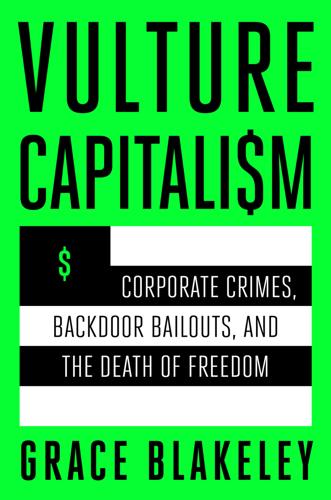
Vulture Capitalism: Corporate Crimes, Backdoor Bailouts, and the Death of Freedom
by
Grace Blakeley
Published 11 Mar 2024
Fleckenstein and Sheehan, Greenspan’s Bubbles; Jeannine Aversa, “Alan Greenspan enjoys rock star renown,” Associated Press, March 5, 2005, https://www.chron.com/business/article/alan-greenspan-enjoys-rock-star-renown-1914177.php. 92. Streek, Buying Time. 93. Richard C. Koo, The Other Half of Macroeconomics and the Fate of Globalization (Hoboken, NJ: John Wiley & Sons, 2018). 94. Durand, Fictitious Capital. 95. Ibid. 96. Ibid. 97. Benjamin S. Braun, “Speaking to the People? Money, Trust, and Central Bank Legitimacy in the Age of Quantitative Easing,” Review of International Political Economy 23, no. 6 (November 2016): 1064–92, https://doi.org/10.1080/09692290.2016.1252415. 98. They have, in Braun’s words, “made the long-term interest rate a policy variable.” Benjamin S. Braun, “Central Bank Planning: Unconventional Monetary Policy and the Price of Bending the Yield Curve,” in Jens Beckert and Richard Bronk (eds.), Uncertain Futures: Imaginaries, Narratives, and Calculation in the Economy (Oxford: Oxford University Press, 2018). 99.
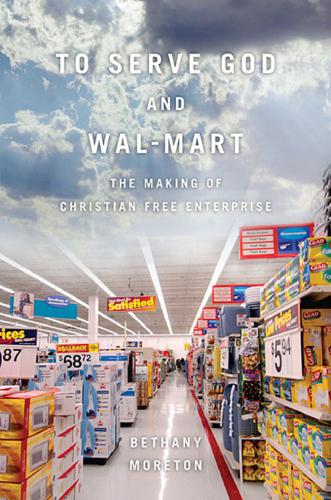
To Serve God and Wal-Mart: The Making of Christian Free Enterprise
by
Bethany Moreton
Published 15 May 2009
The sections of the country that opposed chains most vociferously had suffered at the hands of Northern railroads, Eastern banks, and industrial monopolies that demonstrably extracted wealth in a semiÂ�colonial relationship with the hinterlands.59 During the nineteenth century’s Populist moment, no crime of the Republican Northeast inflamed greater passions than the region’s jealous monopoly on the money supply. Even after the Federal Reserve system and the Farm Loan Act liberalized credit somewhat in the 1910s and 1920s, the Northern hold on capÂ�ital ensured that most Southern companies of any size would be only branches of Northern firms.60 This Northern “money trust” still smacked of conspiracy to the anÂ� tichain movement a generation later. “I Â�don’t want to be bolshevistic,” wrote one Texan in support of Depression-Â�era antichain legislation, but€“it certainly is no permanent relief or progÂ�ress for the government to create temporary jobs and distribute money and in a few days it all winds up in Chicago or New York City in the hands of a few extremely wealthy men, owners of the chains and utilities.”61 Patman, the leading ConÂ�gresÂ�sional champion of the inÂ�deÂ�penÂ�dent stores, pointed out that while 200 companies controlled more than half the country’s corporate wealth, only eleven of these were based in the West and a mere nine in the South: “‘How a true Texan can favor ownership and control of local€business by Wall Streeters,” he concluded, “I cannot understand.’”62 Members of the Ku Klux Klan in Clarke County, Georgia, railed against the chain owners as a “‘Little Group of Kings in Wall Street’” and warned 21 TO SERVE GOD AND WAL - Â�M ART that Jewish and Catholic immigrants were using the chain to pauperize native-Â�born white ProtÂ�esÂ�tants.63 Employing a metaphor familiar to rural ProtÂ�esÂ�tants, a 1937 novel cast chain stores as evidence of the approaching Apocalypse.64 Even the fundamental myth of corporate personhood came up for debate: contrasting “arÂ�tiÂ�fiÂ�cial beings” like the American Retail Federation to tangible, “honest-Â�to-Â�God citizens,” Patman attacked the premÂ�ise that legal incorporation permitted companies to claim the constitutional protections of private citizens.65 The suspicion of “foreigners” was echoed in charges of shady business practices.
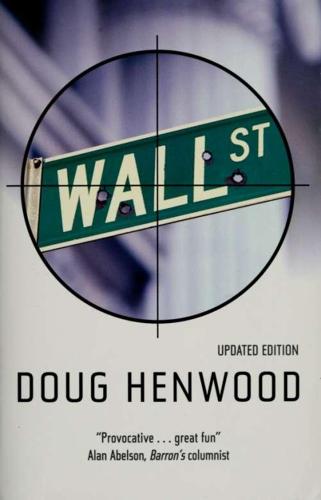
Wall Street: How It Works And for Whom
by
Doug Henwood
Published 30 Aug 1998
Commercial banks were forbidden to play in the stock market and similarly racy arenas; they were to use their depositors' money mainly to make business loans. Glass-Steagall also affirmed long-standing restrictions on bank branching, regulations that sprang from American suspicions of a centralizing money trust. Banking emerged from the Depression a tightly regulated industry laden with government guarantees, and the rest of the system was sedate and fairly well-defined. Things are no longer sedate nor well-defined. Institutional borders have faded, bank interest rates are no longer fixed by law, and interstate bank branching restrictions are gone.
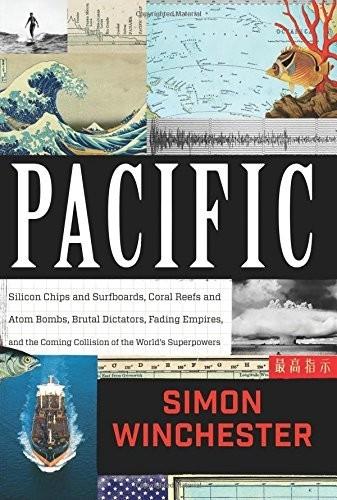
Pacific: Silicon Chips and Surfboards, Coral Reefs and Atom Bombs, Brutal Dictators, Fading Empires, and the Coming Collision of the World's Superpowers
by
Simon Winchester
Published 27 Oct 2015
They are to be found all around the Pacific, their ancestral homes irradiated, their health compromised, their understandably querulous attitudes found tiresome by some—and, with their layers of lawyers, involved in interminable disputes about their compensation. Unsurprisingly, Washington has dealt with its nuclear polluting of the modern Pacific mainly by paying out uncountable millions in taxpayer money and hoping the problem will go away. “Bombing Bikini Again,” read the headline in a newspaper article in 1994: “This Time with Money.” Trust funds, compensation, claims, payouts, investments—these days such words pepper the language of the Bikinians: “In all our meetings now,” said a former Peace Corps volunteer who now acts as liaison with the U.S. government, “it’s just money, money, money.” One means of gathering money for the islanders these days is by promoting the sunken ships of Bikini Atoll, catnip for the world’s richest and most elite deep-sea divers.
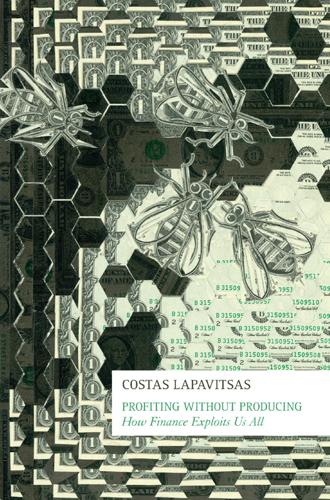
Profiting Without Producing: How Finance Exploits Us All
by
Costas Lapavitsas
Published 14 Aug 2013
Links of this nature were merely incipient when Marx wrote Capital, but have become characteristic of capitalism since the end of the nineteenth century and exhibit a variety of forms across particular countries. Banks are not the dominant partner in bank–industry relations under conditions of financialized capitalism. Even in provision of external finance to industry, banks compete against other financial institutions, including pension funds, money trusts and insurance companies. Furthermore, industrial and commercial capitals systematically engage in financial activities on own account. These include independent issuing of debt in open markets (commercial paper, bonds, warrants, and so on) supplying consumer and trade credit, engaging in foreign exchange markets as well as transacting in forward, futures and derivatives markets.

Evil Geniuses: The Unmaking of America: A Recent History
by
Kurt Andersen
Published 14 Sep 2020
When John Kenneth Galbraith wrote American Capitalism in the 1950s, the idea that American capitalism was in any sense run by a financial cabal, Wall Street, seemed like an obsolete cartoon. “As the banker, as a symbol of economic power, passed into the shadows,” he wrote, “his place was taken by the giant industrial corporation,” which was much more plausible. The association of power with the banker had always depended on the somewhat tenuous belief in a “money trust”—in the notion that the means for financing the initiation and expansion of business enterprises was concentrated in the hands of a few men. The ancestry of this idea was in Marx’s doctrine of finance capital; it was not susceptible to statistical or other empirical verification at least in the United States.
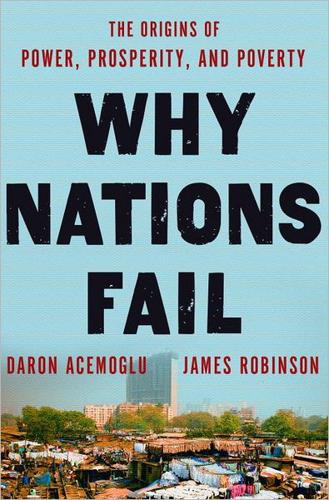
Why Nations Fail: The Origins of Power, Prosperity, and Poverty
by
Daron Acemoglu
and
James Robinson
Published 20 Mar 2012
If there are men in this country big enough to own the government of the United States, they are going to own it.” Wilson worked to pass the Clayton Antitrust Act in 1914, strengthening the Sherman Act, and he created the Federal Trade Commission, which enforced the Clayton Act. In addition, under the impetus of the investigation of the Pujo Committee, led by Louisiana congressman Arsene Pujo, into the “money trust,” the spread of monopoly into the financial industry, Wilson moved to increase regulation of the financial sector. In 1913 he created the Federal Reserve Board, which would regulate monopolistic activities in the financial sector. The rise of Robber Barons and their monopoly trusts in the late nineteenth and early twentieth centuries underscores that, as we already emphasized in chapter 3, the presence of markets is not by itself a guarantee of inclusive institutions.
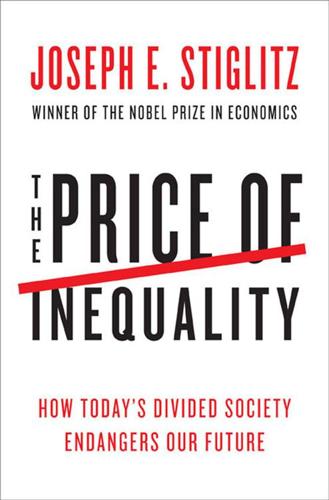
The Price of Inequality: How Today's Divided Society Endangers Our Future
by
Joseph E. Stiglitz
Published 10 Jun 2012
Another, equally important decision was the Court’s 2011 striking down (in Arizona Free Enterprise Club v. Bennett) the state of Arizona’s attempt to redress the imbalance of political power created by an imbalance of economic power by providing additional funds to the candidates who were less successful in raising private campaign money. Trust in the Court is important, because in any society there will be disputes, and it is vital that the courts be viewed as fair arbiters of such disputes. But if the Court is viewed as not fair—as taking sides, even before the arguments have been presented—then the Court’s main source of strength, its credibility and the influence it has in the court of public opinion, will quickly disappear.
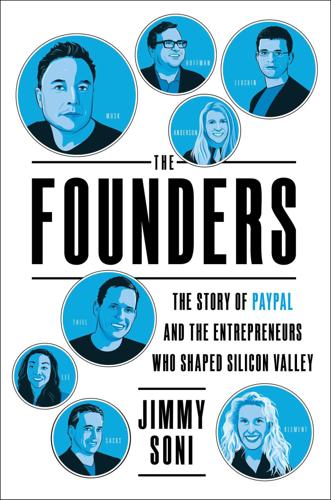
The Founders: The Story of Paypal and the Entrepreneurs Who Shaped Silicon Valley
by
Jimmy Soni
Published 22 Feb 2022
One—CheckFree, a company trying to digitize the paper billing process—was particularly drawn to PayPal’s scale, its substantial payment volume, and the trust it had achieved while operating on a third-party platform. “Consumer brands are sticky,” Pete Kight, the founder of CheckFree said, “and when you talk about moving money, trust is so difficult to build.” Kight was impressed that PayPal had managed to turn eBay’s broken payment system into a full-blown business. “It isn’t always that a solution finds the problem,” Kight said of PayPal. “Sometimes the problem finds the solution.” Kight knew of PayPal’s ambitions to go public, but Thiel had concerns about the IPO.
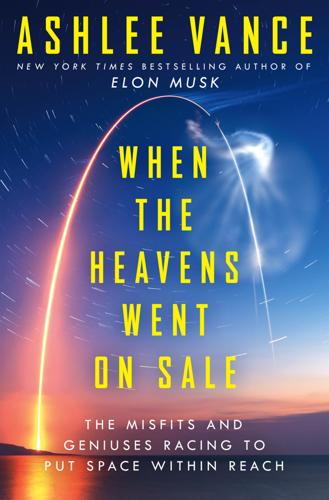
When the Heavens Went on Sale: The Misfits and Geniuses Racing to Put Space Within Reach
by
Ashlee Vance
Published 8 May 2023
Oh, also, there’s no profits to be had in rockets historically. But this time around would be different because Rocket Lab had pluck and grit and would solve the endless stream of technical challenges that had stumped thousands of people for decades. It would make awesome rockets, and it would make awesome money. Trust me, guys. I’m Peter Beck. I have floppy hair, cool charts, and enthusiasm. Beck would turn up at the meetings like a carnival barker. He had a bag that contained one of the small rocket engines he’d designed and some other parts. He’d also printed up a huge drawing of the rocket he hoped to build and would unfurl it onto the boardroom table, allowing the paper to spread from one end of the table all the way to the other.

Extreme Money: Masters of the Universe and the Cult of Risk
by
Satyajit Das
Published 14 Oct 2011
Where gold relies on a deep-rooted mythology, paper money relies on a system of trust and faith as well as the sanctity and integrity of the underlying legal system. Credit money—the last form of money—is a future claim against someone that can be exchanged for real goods and services. The person lending money trusts the borrower to repay the money lent at the agreed time in the future. British economist John Maynard Keynes once gave his friend Duncan Grant, the artist, money as a birthday gift. Grant was enraged: “The thing is good as a means and absolutely unimportant in itself.” Keynes thought of money as “a mere intermediary without significance in itself which flows from one to another is received and dispensed and disappears when its work is done.”8 Barbarous Relic Gold—chemical symbol Au and atomic number 79—is a dense, malleable, and highly ductile lustrous metal that does not rust in air or water, making it useful in dentistry and electronics.
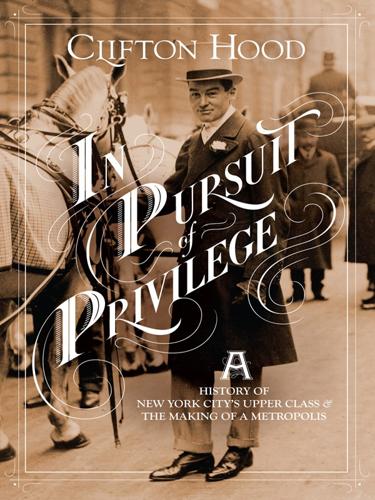
In Pursuit of Privilege: A History of New York City's Upper Class and the Making of a Metropolis
by
Clifton Hood
Published 1 Nov 2016
From the passage of the National Banking Act of 1863 until the creation of the Federal Reserve System in 1913, commercial banks in New York City functioned as the nation’s central reserve and assumed special responsibilities for managing the money supply, particularly during the panics of 1873 and 1907. By 1910, six big banks in New York accounted for three-fifths of the capital and surpluses of all U.S. national banks. Their throttlehold on the national credit structure led the Pujo Commission of 1912 to crusade against the “money trust” and contributed to the formation of the more decentralized Federal Reserve System.30 The New York Stock Exchange (NYSE) ballooned in the late nineteenth century, with the number of its listed stocks and bonds more than tripling and with the volume of shares traded annually increasing by a factor of five from 1871 to 1900.
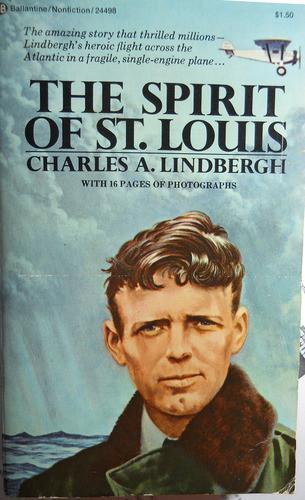
The Spirit of ST Louis
by
Charles A. Lindbergh
Published 2 Jan 1953
Sometimes, when we're alone, Father talks to me about politics and economics, and the reforms our government ought to bring about. I don't make any answer, for I don't quite understand what he means, and it disturbs me to have him mention things that will take place after he is dead. Ever since I can remember, Father has been concerned about what's going on in this country -- tariffs, and monopolies, and the "Money Trust." I sometimes wonder if he doesn't spend too much time thinking about problems he doesn't have to solve. Maybe he makes them seem more serious than they really are. If such dangerous happenings lie ahead, why don't other men worry about them too? But of course my father isn't like other men. There are moments when I feel he can see into the future, as though he were living, today, in years ahead; as though it's my life to come that he dwells in rather than his own.

The Price of Time: The Real Story of Interest
by
Edward Chancellor
Published 15 Aug 2022
They had helped to raise the tower of credit to a tottering height, and now the slightest agitation of any sort was sure to bring collapse.’fn1 The whirlwind came in the form of the Knickerbocker Panic of 1907, when the failure of New York’s Knickerbocker Trust Company brought down dozens of other trust companies.fn2 The panic was quickly snuffed out by Wall Street bankers under the command of J. Pierpont Morgan and the US economy rapidly recovered. But the American people were distrustful of Wall Street’s ‘Money Trust’ and Morgan died in 1913 leaving no one to fill his shoes. In future, it would be the job of the US Federal Reserve to manage America’s money and to step up during panics. The new central bank’s first test came after the end of the Great War. Between 1914 and 1916, the rediscount rate of the Federal Reserve banks was reduced to half its pre-war level.1 Once the war was over and the country demobilized, inflation took off.
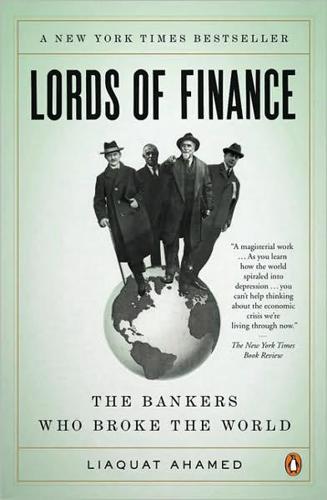
Lords of Finance: The Bankers Who Broke the World
by
Liaquat Ahamed
Published 22 Jan 2009
With deposits of close to $200 million, it was the second largest trust company in the country and considered one of the dominant institutions on Wall Street. Nevertheless, it was still surrounded with a certain mystery. In 1912, during the Pujo Committee hearings on the power of New York banks and the “money trust,” it came to light that though Bankers Trust had numerous stockholders, the entire voting power was vested in the hands of just three trustees: Henry Davison, a senior partner at J. P. Morgan & Co.; George Case of White and Case, Morgan’s principal counsel; and Daniel Reid, a founder and executive of Morgan-controlled U.S.
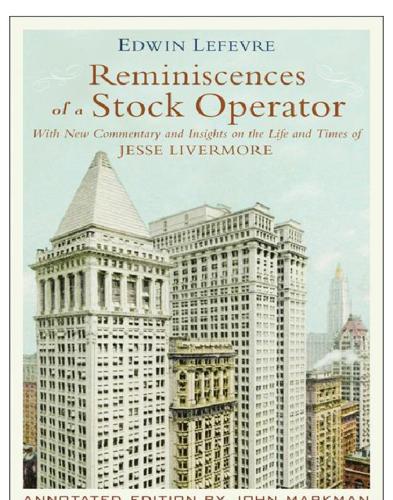
Reminiscences of a Stock Operator
by
Edwin Lefèvre
and
William J. O'Neil
Published 14 May 1923
When Stillman merely stared, Perkins quipped, “Oh you need not confi rm it.”16 At home he required his family to sit silently through two-hour formal dinners.17 Stillman retired from his post as president of National City Bank in 1908. Soon after, he reportedly tried to convince E. H. Harriman, J. P. Morgan, and William Rockefeller that all four should retire for the good of the country. The idea was to put an end to the government’s campaign against the “Money Trusts” and quell the public’s apprehension about the great concentration of wealth and power controlled by these four men. Soon Stillman got his wish. Harriman died a year later. Morgan paid less and less attention to business affairs and became better known as an art collector and traveler. Rockefeller suffered from ill health and was forced to retire.

A Pipeline Runs Through It: The Story of Oil From Ancient Times to the First World War
by
Keith Fisher
Published 3 Aug 2022
Livingston, Origins, 57–63, ch. 2; Sklar, Corporate, 193–4, 398–401, 411–9, 426–9; Roy, Socializing, chs. 7–9; Kolko, Triumph, chs. 1–3; Leonard, ‘American’; Bringhurst, Antitrust, 122–3; Youngman, ‘Tendency – II’. Titan, 336–8, 370–93; Youngman, ibid. and ‘Tendency – I’. 236. Youngman, ‘Tendency – I’, 204–8, and ‘Tendency – II’. 237. U.S. Congress, Report of the Committee Appointed Pursuant to House Resolutions, pt. 2 – Review of the Evidence, 56, 129–30; ‘Analysis of “Money Trust”’, New York Times (1 March 1913). 238. ‘Editorial Comment’, The Bankers’ Magazine 62, no. 4 (April 1901). 239. Ibid. 240. Quoted in Prettyman, ‘Gilded’, 23. 241. LaFeber, New, 172–5; Tarbell, All in the Day’s, 1–26. 242. Weinberg, Taking; Chernow, Titan, 389–93, 435–58, 520–1; Johnson, Development, 201–8; Jones, Limits, 371–2; Kolko, Triumph, 15–17. 243.